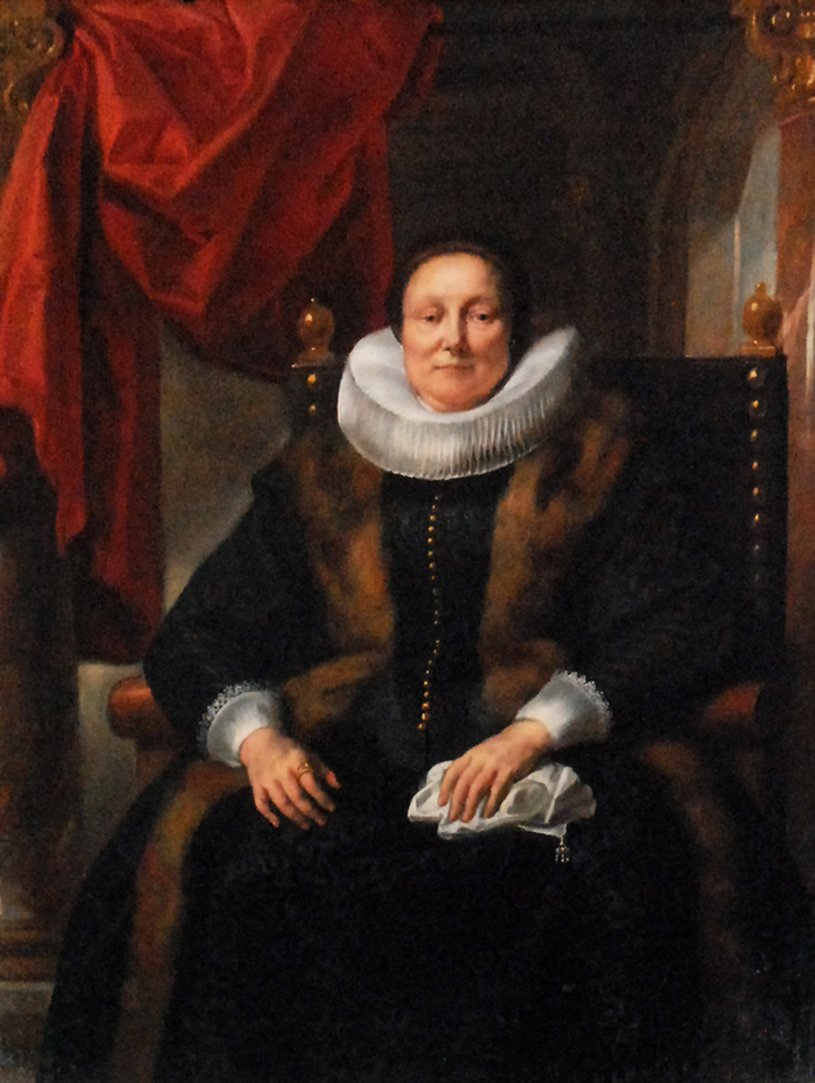
An Unknown Woman
1593-1678
Seated in a high backed chair, against a curtain. Oil on canvas, 59 ins by 45 ins.
Collection Details
Miss Molyneux sale, Robinson and Fisher, 3 June 1937, lot 95, as Flinck: bt by Agnew, from whom acquired by Lord Faringdon, 1942.
Literature
Apollo, XXIX, June 1939, repd; R A d’Hulst, De Tekeningen van Jakob Jordaens, 1956, No. 73.
Exhibition Details
Agnew, London, 1939, No. 41.
Related Painting
An almost identical portrait is in the Musées Royaux, Brussels (No. 244), in which the sitter is seen wearing a white cap. An inscription, also at the foot of the column, explains the digits in the present picture. This reads ‘… tis 66 . . 641’ (ie, Aetatis 66 1641). It is slightly smaller than the painting catalogued here, but the canvas is likely to have been reduced. The Buscot portrait may be judged superior.
Related Drawings
A black chalk study for the figure, with differences in the background, is in the Louvre (No. 20,021). It was published by Rooses, Onze Kunst, 1903 (II), pp. 159, repd, 160, as a study for the Brussels portrait. As the sitter is wearing a black cap, it can perhaps be more plausibly associated with the picture now at Buscot.
Companion Picture
The Portrait of an Old Man aged 73, with the sitter’s age painted as if incised in the bronze base of the column, once in the Crozat collection and now in the Hermitage (cf exh cat Dutch and Flemish Paintings from the Hermitage, New York and Chicago, 1988, No. 43), is the pendant of the present picture. A study for it in the Louvre (No. 20,022) is a companion drawing to the study of the woman referred to above. The Portrait of a Man aged 73 with the date 1641 painted over the original date, 1637, which first appeared in the Baron de Beurnonville sale, Paris, 9 May 1881, and was in the Thyssen collection (size 57½ in. x 44 in.) until sold at auction in 1984 (and again in 1988), is a pair to the portrait at Brussels (cf M Rooses, Jordaens, 1906, p. 110). What appears to be the superior quality of the Buscot painting, as well as its closer relationship to the drawing, leads to the supposition that it, rather than the Brussels version, is the pendant to the true original of the Portrait of an Old Man, in the Hermitage.
Background
Rooses (op cit, p. 111), writing of the Brussels and Thyssen portraits, describes them as being executed in the extreme of Jordaens’ manière moëlleuse et fondue, which he began in c.1637. The Buscot version is painted in a similar style. Professor Michael Jaffé has pointed out that Jordaens is here reviving a type of composition that originated in Flanders. The invention of this uncompromisingly frontal pattern is due to Frans Floris; the prototype is the Falconer’s Wife at Caen.
The pentiment of a curtain can be discerned in the archway at the top right. The picture appears to have been cut down on all sides, despite the fact that the drawing shows a smaller area of background.
The Trustees of the Faringdon Collection 25.
All rights reserved.
